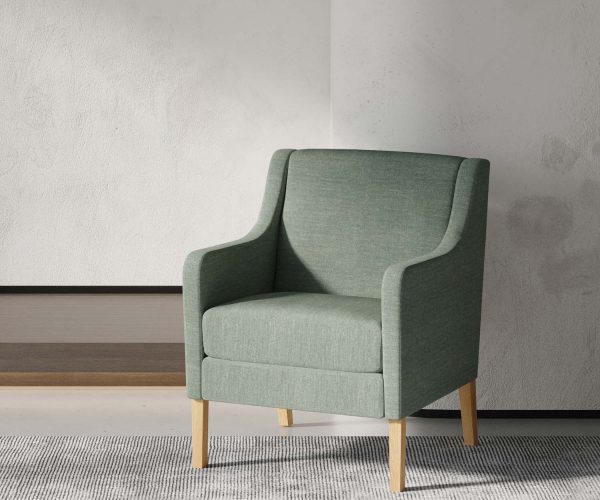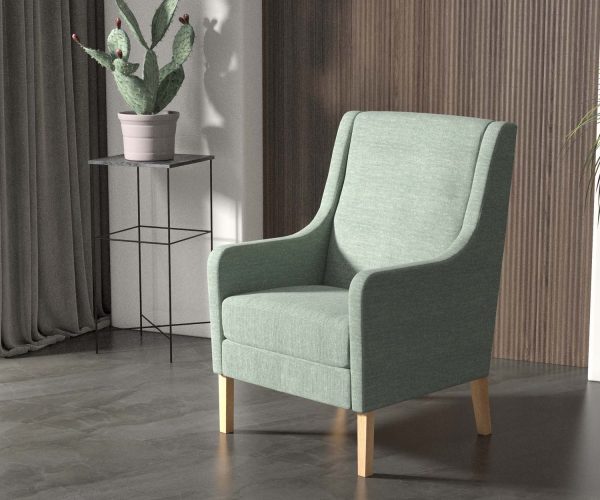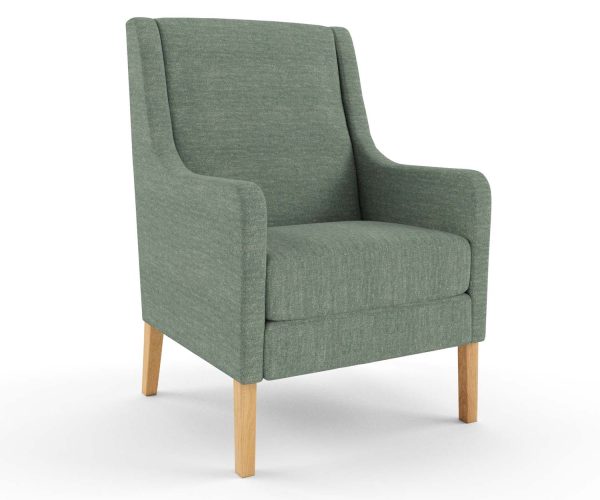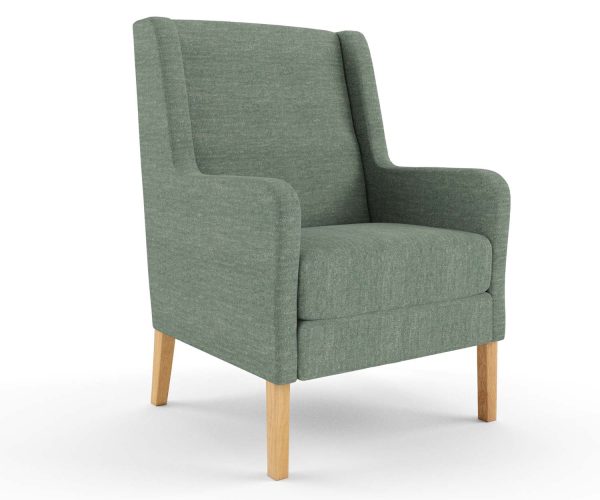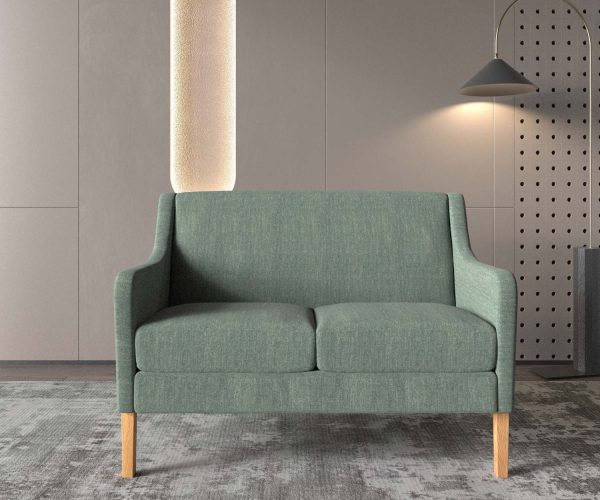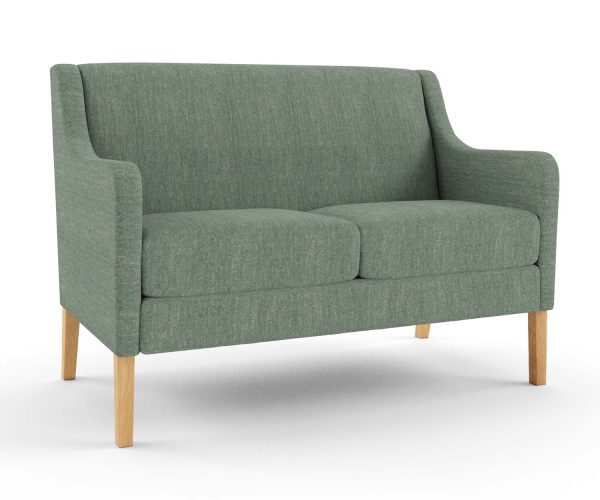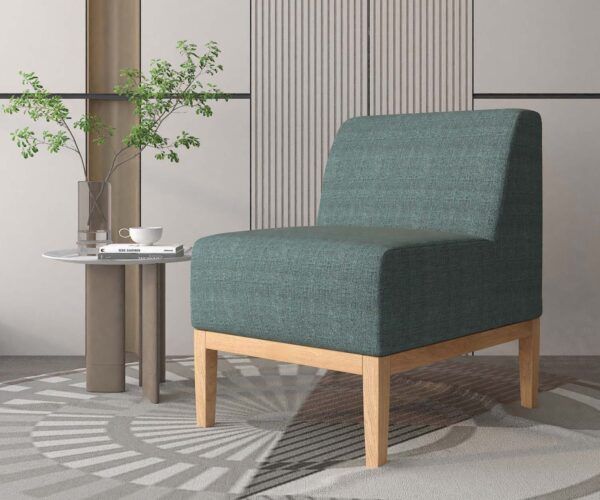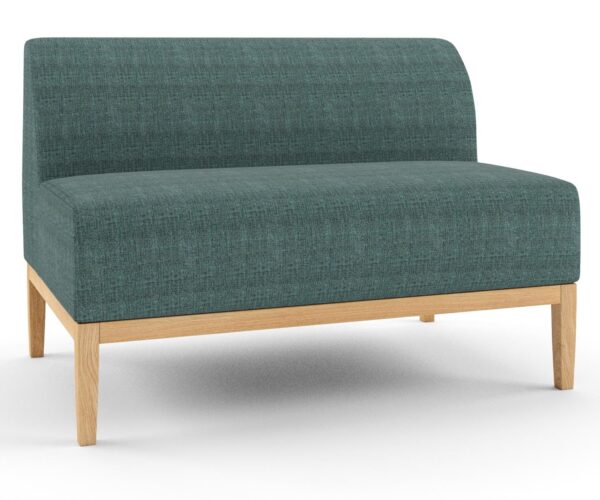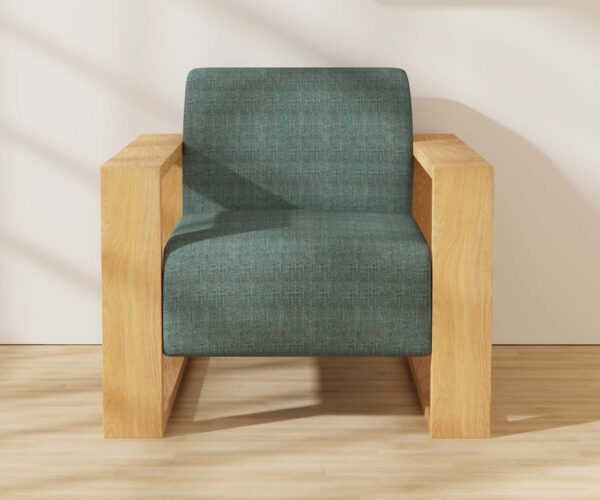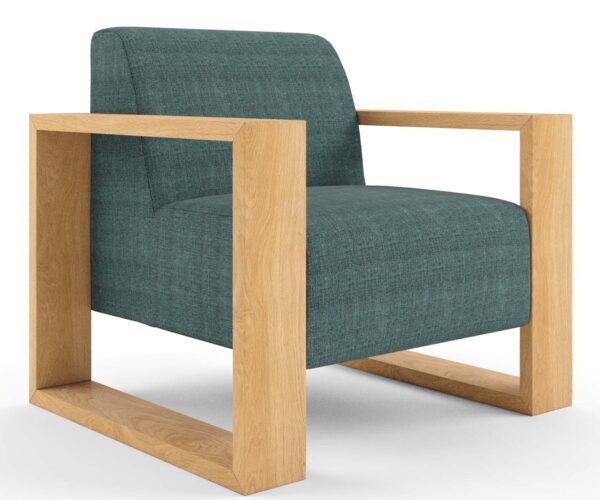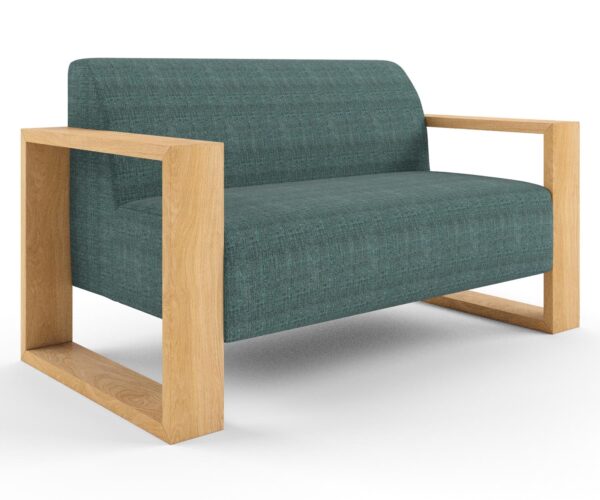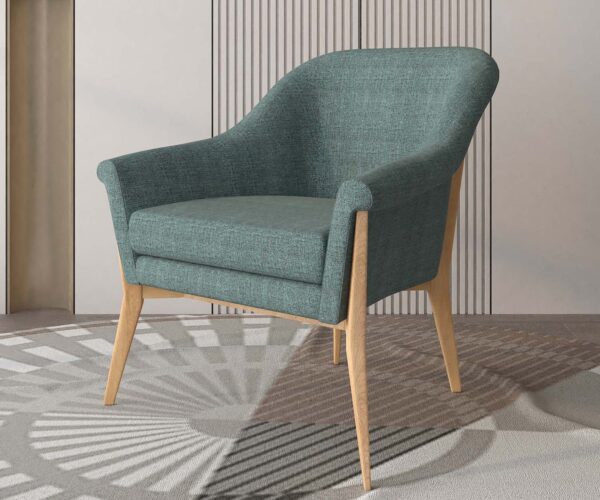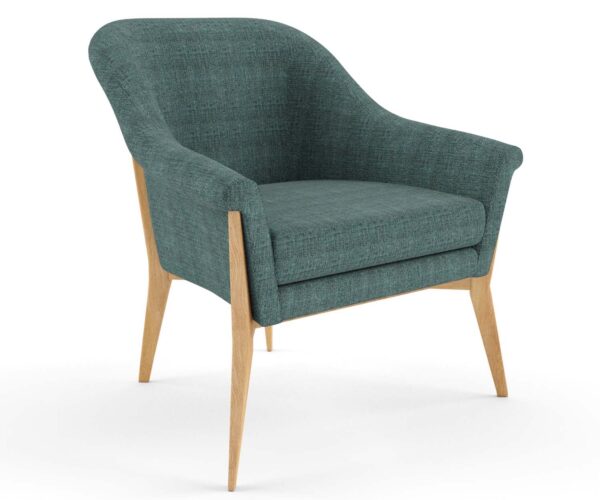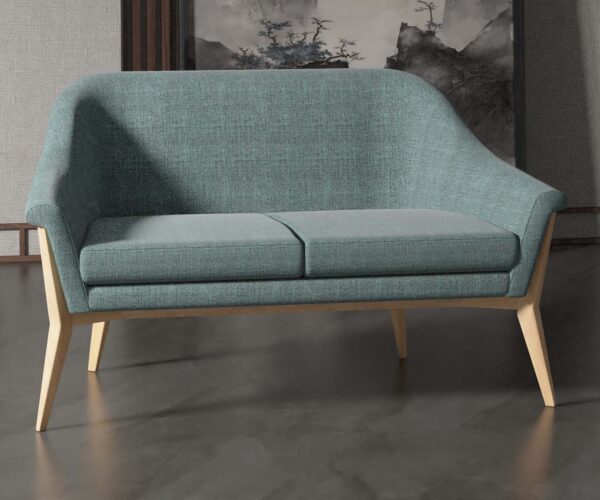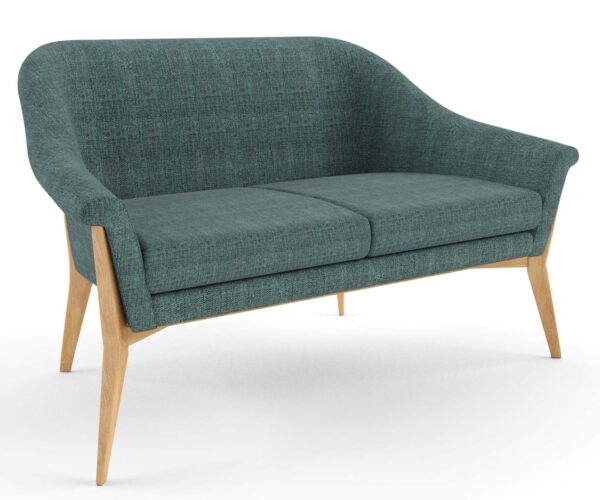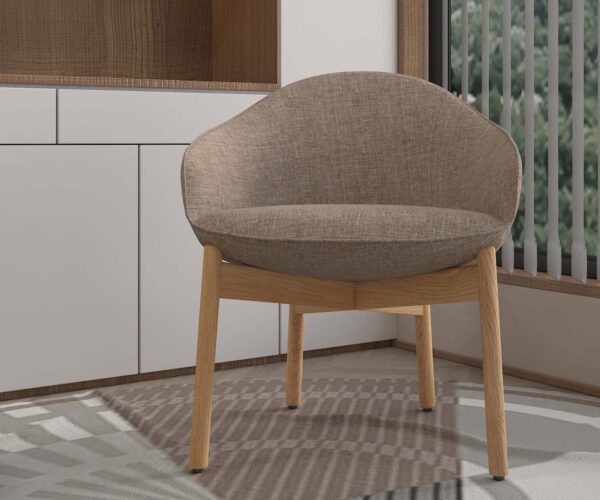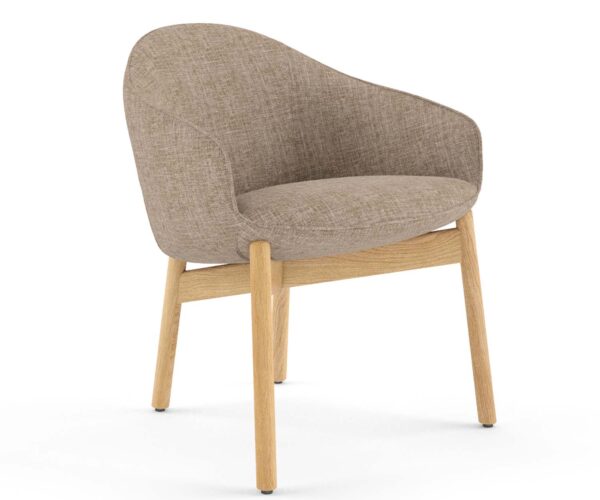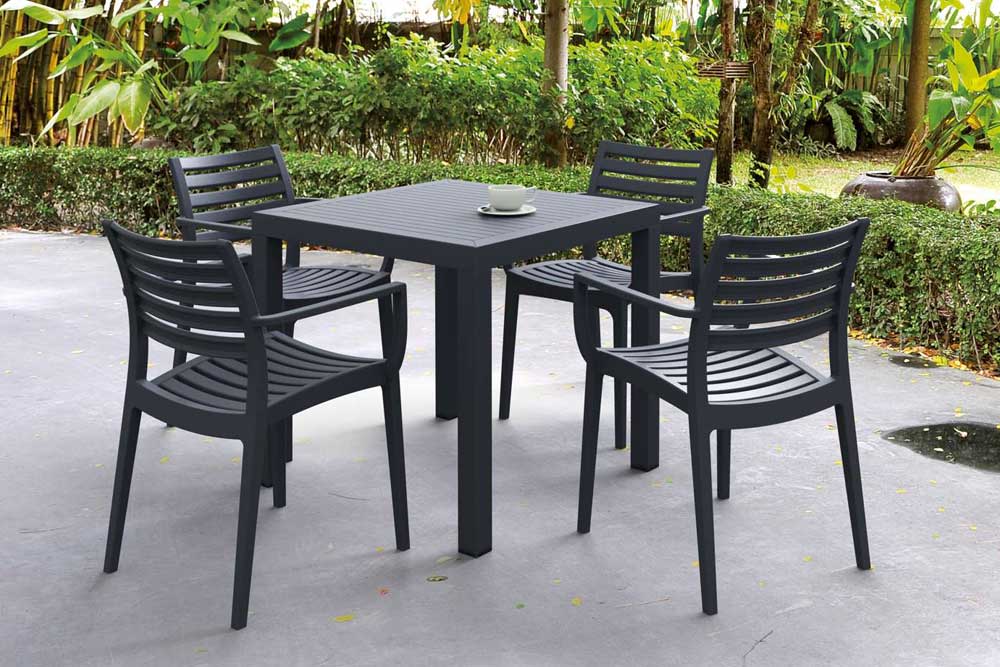Designing a New Residential Aged Care Facility? Here’s Why Furniture Should Be a Top Priority

In designing a Residential Aged Care Facility (RACF), furniture is often viewed as a finishing touch – something to worry about after the building is complete. However, furniture plays a pivotal role in every phase of the project: design, construction, and ongoing operation. It’s not just about aesthetics or comfort; it’s about creating a functional, safe, and homely environment that supports the physical and emotional well-being of residents, as well as the efficiency of staff.
In this article, we’ll explore how the right furniture choices can shape the success of a new aged care facility, enhancing the experience for residents, staff, and visitors alike.
Design Phase: Putting People First
Design is about collaboration, involving residents, staff, and stakeholders in the decision-making process to ensure the facility meets their needs. In this phase, furniture is a crucial element because it influences the layout, atmosphere, and usability of the space.
Resident-Centric Design
When residents are part of the design conversation, their specific needs become the driving force behind furniture selection. For example, residents may require chairs that are easy to get in and out of, beds that can be adjusted to suit individual mobility requirements, and tables that accommodate wheelchairs. By engaging residents in discussions about furniture, the design becomes more personalised, improving their quality of life.
Creating a Homely Environment
Furniture plays a significant role in making an institutional space feel more like home. Choices like warm wood finishes, soft upholstery, and familiar furniture styles can ease the emotional transition for residents moving into aged care. Comfortable armchairs, cosy sofas, and attractive dining sets help create spaces where residents feel comfortable and relaxed, promoting mental well-being.
Customisation for Specific Needs
Custom furniture is often required to address the unique challenges of aged care. For example, dementia-friendly furniture includes contrasting colours that help residents navigate spaces more easily, while furniture for those with mobility impairments must offer additional support, such as armrests and higher seating. Involving healthcare professionals in the design process ensures that every piece of furniture serves a practical purpose, improving safety and independence.
Actionable Tips for the Design Phase
- Engage Stakeholders Early: Involve residents, family members, staff, and healthcare professionals in the furniture selection process to ensure the furniture meets their needs. Gather input on comfort, mobility requirements, and aesthetics.
- Prioritise Accessibility: Choose furniture that accommodates mobility aids like wheelchairs or walkers. Opt for chairs with armrests, height-adjustable tables, and beds that can be customised to individual needs.
- Select Dementia-Friendly Designs: Use furniture with contrasting colours and clear visual cues for residents with dementia. For example, chairs with coloured seats can help residents easily differentiate seating in dining and common areas.
- Choose Customisable Options: Ensure furniture is adaptable for various needs, such as chairs with removable cushions or adjustable recliners for varying levels of physical ability.
- Opt for Home-Like Furniture Styles: Create a warm, welcoming atmosphere by selecting soft, familiar furniture styles. Incorporating traditional or classic designs can help ease the transition to aged care.
- Consider Soft Textures and Colours: Use upholstery and materials that are soft to the touch, with warm colours that create a calming and inviting environment. Avoid clinical or institutional looks.
- Plan for Future Needs: Think ahead by selecting furniture that can be easily modified or updated as resident needs change. This ensures longevity and cost-effectiveness in the long run.
Construction Phase: Building for Durability and Safety
During the construction phase, attention shifts towards ensuring that furniture aligns with the facility’s long-term needs. Here, the focus is on durability, safety, and compliance with industry standards.
Durability and Easy Maintenance
Aged care furniture must withstand heavy, daily use. Materials should be chosen for their durability, especially in high-traffic areas like dining rooms, lounges, and communal spaces. Fabrics should be stain-resistant and easy to clean, reducing the spread of germs and minimising maintenance costs. High-quality, long-lasting furniture ensures the facility avoids frequent replacements, which can disrupt daily life for residents and increase operational costs.
Safety and Accessibility
Furniture layout and design must prioritise accessibility. For example, chairs should have appropriate spacing between them to allow easy navigation for those using wheelchairs or walking aids. In addition, furniture should not have sharp edges or unstable bases that could lead to falls or injuries. By considering furniture placement early in the construction process, you create an environment that promotes safety and supports the mobility needs of residents.
Integration with Technology
Modern aged care facilities often incorporate technology to improve resident care, and furniture can support this integration. Beds with built-in monitoring systems, desks with cable management for telehealth consultations, and bedside tables with charging ports are just a few examples of how furniture can enhance the technological infrastructure of a facility. Planning for this integration during construction ensures that furniture not only fits the space but also meets the future needs of the facility.
Actionable Tips for the Construction Phase
- Invest in High-Quality, Durable Materials: Choose furniture that can withstand heavy daily use without frequent repairs or replacements. Look for materials that resist stains, moisture, and damage.
- Ensure Compliance with Safety Standards: Make sure all furniture meets safety regulations specific to aged care. Avoid sharp edges, unstable designs, or materials that could contribute to falls or injuries.
- Incorporate Anti-Microbial Fabrics: Select upholstery fabrics that are anti-microbial and easy to clean. This helps maintain hygiene standards and reduces the risk of infection spreading.
- Provide Ample Space Around Furniture: Plan layouts with enough clearance for wheelchairs and walkers to move easily around furniture. This improves accessibility and reduces the risk of accidents.
- Choose Fire-Retardant Materials: Ensure furniture meets fire safety standards by selecting materials that are fire-retardant. This is essential in communal and bedroom areas where the risk of fire must be minimised.
- Integrate Technology into Furniture: Plan for technological advancements by choosing furniture that supports the use of tech, such as chairs with charging stations, or beds that can accommodate health-monitoring devices.
- Opt for Modular Furniture: Select modular furniture designs that can be easily moved or reconfigured as needed. This allows for flexibility in space planning and future renovations.
Operation Phase: Supporting Daily Life and Efficiency
Once the facility is up and running, furniture continues to play an essential role in the daily lives of residents and staff. The right furniture supports comfort, well-being, and social interaction while ensuring that staff can carry out their duties efficiently.
Comfort and Well-Being
Creating a comfortable environment is essential in aged care. Residents spend a significant amount of time indoors, so comfortable seating in lounges, bedrooms, and dining areas is a must. Sofas, recliners, and cushioned chairs with supportive armrests provide comfort and help residents feel at ease in their new surroundings. Incorporating soft fabrics, warm colours, and familiar furniture styles further enhances the homeliness of the facility, reducing the emotional impact of the move to aged care.
Promoting Social Interaction
Furniture layout in communal areas can encourage social interaction, which is vital for residents’ mental health. Thoughtfully designed lounges with cosy seating arrangements foster conversation and engagement among residents, while dining room tables designed for group meals can create a sense of community. Outdoor furniture, such as patio sets, can also encourage residents to spend time in nature, promoting relaxation and socialisation.
Ergonomics and Efficiency for Staff
The needs of staff are often overlooked when designing furniture for aged care facilities. Ergonomic furniture at nursing stations, mobile workstations, and comfortable seating in break rooms can help reduce workplace fatigue and prevent injuries. Well-designed storage solutions also ensure that care staff have easy access to supplies and equipment, improving efficiency and reducing stress.
Actionable Tips for the Operation Phase
- Create Social Spaces with Furniture Layout: Arrange furniture in communal areas to encourage social interaction. Group seating in circular or semi-circular layouts, and provide varied seating options for different needs.
- Prioritise Comfort in Resident Rooms: Provide comfortable and supportive seating, such as recliners with adjustable footrests. Ensure that every room feels personal by allowing residents to add their own furniture touches where possible.
- Use Outdoor Furniture to Promote Activity: Place comfortable, weather-resistant furniture in outdoor spaces to encourage residents to enjoy fresh air and light physical activity, which is important for both physical and mental health.
- Provide Ergonomic Furniture for Staff: Ensure nursing stations and work areas have ergonomic chairs and desks. Comfortable, adjustable furniture helps staff maintain productivity and reduces the risk of injury.
- Incorporate Multi-Functional Furniture: Select furniture that serves multiple purposes, such as tables that can be used for dining and activities, or chairs that double as visitor seating. This optimises space and reduces clutter.
- Maintain Furniture Regularly: Develop a maintenance schedule to regularly clean, inspect, and repair furniture. Keeping furniture in good condition enhances resident safety and extends the life of each piece.
- Adapt Furniture as Needs Evolve: Continuously assess how residents use the space and make adjustments to furniture arrangements as required. As care needs change, the flexibility of your furniture choices will ensure the facility remains functional.
Furniture as a Foundation for Success
In the design, construction, and operation of a new Residential Aged Care Facility, furniture is far more than a decorative afterthought – it’s a key component of the facility’s success. From ensuring comfort and safety for residents to supporting staff in their daily tasks, the right furniture choices can create a welcoming, functional, and efficient environment that enhances quality of life.
As aged care providers and designers collaborate on new projects, the role of furniture should be at the forefront of the conversation. Thoughtful, well-planned furniture decisions will ultimately shape the experience of everyone who lives, works, or visits the facility. With the right approach, furniture can help transform a residential aged care facility into a true home.
Australian Made Aged Care Furniture: Fit-For-Purpose Furniture Designed to Improve Quality of Life for Older People
More News
Designing a New Residential Aged Care Facility? Here’s Why Furniture Should Be a Top Priority

In designing a Residential Aged Care Facility (RACF), furniture is often viewed as a finishing touch – something to worry about after the building is complete. However, furniture plays a pivotal role in every phase of the project: design, construction, and ongoing operation. It’s not just about aesthetics or comfort; it’s about creating a functional, safe, and homely environment that supports the physical and emotional well-being of residents, as well as the efficiency of staff.
In this article, we’ll explore how the right furniture choices can shape the success of a new aged care facility, enhancing the experience for residents, staff, and visitors alike.
Design Phase: Putting People First
Design is about collaboration, involving residents, staff, and stakeholders in the decision-making process to ensure the facility meets their needs. In this phase, furniture is a crucial element because it influences the layout, atmosphere, and usability of the space.
Resident-Centric Design
When residents are part of the design conversation, their specific needs become the driving force behind furniture selection. For example, residents may require chairs that are easy to get in and out of, beds that can be adjusted to suit individual mobility requirements, and tables that accommodate wheelchairs. By engaging residents in discussions about furniture, the design becomes more personalised, improving their quality of life.
Creating a Homely Environment
Furniture plays a significant role in making an institutional space feel more like home. Choices like warm wood finishes, soft upholstery, and familiar furniture styles can ease the emotional transition for residents moving into aged care. Comfortable armchairs, cosy sofas, and attractive dining sets help create spaces where residents feel comfortable and relaxed, promoting mental well-being.
Customisation for Specific Needs
Custom furniture is often required to address the unique challenges of aged care. For example, dementia-friendly furniture includes contrasting colours that help residents navigate spaces more easily, while furniture for those with mobility impairments must offer additional support, such as armrests and higher seating. Involving healthcare professionals in the design process ensures that every piece of furniture serves a practical purpose, improving safety and independence.
Actionable Tips for the Design Phase
- Engage Stakeholders Early: Involve residents, family members, staff, and healthcare professionals in the furniture selection process to ensure the furniture meets their needs. Gather input on comfort, mobility requirements, and aesthetics.
- Prioritise Accessibility: Choose furniture that accommodates mobility aids like wheelchairs or walkers. Opt for chairs with armrests, height-adjustable tables, and beds that can be customised to individual needs.
- Select Dementia-Friendly Designs: Use furniture with contrasting colours and clear visual cues for residents with dementia. For example, chairs with coloured seats can help residents easily differentiate seating in dining and common areas.
- Choose Customisable Options: Ensure furniture is adaptable for various needs, such as chairs with removable cushions or adjustable recliners for varying levels of physical ability.
- Opt for Home-Like Furniture Styles: Create a warm, welcoming atmosphere by selecting soft, familiar furniture styles. Incorporating traditional or classic designs can help ease the transition to aged care.
- Consider Soft Textures and Colours: Use upholstery and materials that are soft to the touch, with warm colours that create a calming and inviting environment. Avoid clinical or institutional looks.
- Plan for Future Needs: Think ahead by selecting furniture that can be easily modified or updated as resident needs change. This ensures longevity and cost-effectiveness in the long run.
Construction Phase: Building for Durability and Safety
During the construction phase, attention shifts towards ensuring that furniture aligns with the facility’s long-term needs. Here, the focus is on durability, safety, and compliance with industry standards.
Durability and Easy Maintenance
Aged care furniture must withstand heavy, daily use. Materials should be chosen for their durability, especially in high-traffic areas like dining rooms, lounges, and communal spaces. Fabrics should be stain-resistant and easy to clean, reducing the spread of germs and minimising maintenance costs. High-quality, long-lasting furniture ensures the facility avoids frequent replacements, which can disrupt daily life for residents and increase operational costs.
Safety and Accessibility
Furniture layout and design must prioritise accessibility. For example, chairs should have appropriate spacing between them to allow easy navigation for those using wheelchairs or walking aids. In addition, furniture should not have sharp edges or unstable bases that could lead to falls or injuries. By considering furniture placement early in the construction process, you create an environment that promotes safety and supports the mobility needs of residents.
Integration with Technology
Modern aged care facilities often incorporate technology to improve resident care, and furniture can support this integration. Beds with built-in monitoring systems, desks with cable management for telehealth consultations, and bedside tables with charging ports are just a few examples of how furniture can enhance the technological infrastructure of a facility. Planning for this integration during construction ensures that furniture not only fits the space but also meets the future needs of the facility.
Actionable Tips for the Construction Phase
- Invest in High-Quality, Durable Materials: Choose furniture that can withstand heavy daily use without frequent repairs or replacements. Look for materials that resist stains, moisture, and damage.
- Ensure Compliance with Safety Standards: Make sure all furniture meets safety regulations specific to aged care. Avoid sharp edges, unstable designs, or materials that could contribute to falls or injuries.
- Incorporate Anti-Microbial Fabrics: Select upholstery fabrics that are anti-microbial and easy to clean. This helps maintain hygiene standards and reduces the risk of infection spreading.
- Provide Ample Space Around Furniture: Plan layouts with enough clearance for wheelchairs and walkers to move easily around furniture. This improves accessibility and reduces the risk of accidents.
- Choose Fire-Retardant Materials: Ensure furniture meets fire safety standards by selecting materials that are fire-retardant. This is essential in communal and bedroom areas where the risk of fire must be minimised.
- Integrate Technology into Furniture: Plan for technological advancements by choosing furniture that supports the use of tech, such as chairs with charging stations, or beds that can accommodate health-monitoring devices.
- Opt for Modular Furniture: Select modular furniture designs that can be easily moved or reconfigured as needed. This allows for flexibility in space planning and future renovations.
Operation Phase: Supporting Daily Life and Efficiency
Once the facility is up and running, furniture continues to play an essential role in the daily lives of residents and staff. The right furniture supports comfort, well-being, and social interaction while ensuring that staff can carry out their duties efficiently.
Comfort and Well-Being
Creating a comfortable environment is essential in aged care. Residents spend a significant amount of time indoors, so comfortable seating in lounges, bedrooms, and dining areas is a must. Sofas, recliners, and cushioned chairs with supportive armrests provide comfort and help residents feel at ease in their new surroundings. Incorporating soft fabrics, warm colours, and familiar furniture styles further enhances the homeliness of the facility, reducing the emotional impact of the move to aged care.
Promoting Social Interaction
Furniture layout in communal areas can encourage social interaction, which is vital for residents’ mental health. Thoughtfully designed lounges with cosy seating arrangements foster conversation and engagement among residents, while dining room tables designed for group meals can create a sense of community. Outdoor furniture, such as patio sets, can also encourage residents to spend time in nature, promoting relaxation and socialisation.
Ergonomics and Efficiency for Staff
The needs of staff are often overlooked when designing furniture for aged care facilities. Ergonomic furniture at nursing stations, mobile workstations, and comfortable seating in break rooms can help reduce workplace fatigue and prevent injuries. Well-designed storage solutions also ensure that care staff have easy access to supplies and equipment, improving efficiency and reducing stress.
Actionable Tips for the Operation Phase
- Create Social Spaces with Furniture Layout: Arrange furniture in communal areas to encourage social interaction. Group seating in circular or semi-circular layouts, and provide varied seating options for different needs.
- Prioritise Comfort in Resident Rooms: Provide comfortable and supportive seating, such as recliners with adjustable footrests. Ensure that every room feels personal by allowing residents to add their own furniture touches where possible.
- Use Outdoor Furniture to Promote Activity: Place comfortable, weather-resistant furniture in outdoor spaces to encourage residents to enjoy fresh air and light physical activity, which is important for both physical and mental health.
- Provide Ergonomic Furniture for Staff: Ensure nursing stations and work areas have ergonomic chairs and desks. Comfortable, adjustable furniture helps staff maintain productivity and reduces the risk of injury.
- Incorporate Multi-Functional Furniture: Select furniture that serves multiple purposes, such as tables that can be used for dining and activities, or chairs that double as visitor seating. This optimises space and reduces clutter.
- Maintain Furniture Regularly: Develop a maintenance schedule to regularly clean, inspect, and repair furniture. Keeping furniture in good condition enhances resident safety and extends the life of each piece.
- Adapt Furniture as Needs Evolve: Continuously assess how residents use the space and make adjustments to furniture arrangements as required. As care needs change, the flexibility of your furniture choices will ensure the facility remains functional.
Furniture as a Foundation for Success
In the design, construction, and operation of a new Residential Aged Care Facility, furniture is far more than a decorative afterthought – it’s a key component of the facility’s success. From ensuring comfort and safety for residents to supporting staff in their daily tasks, the right furniture choices can create a welcoming, functional, and efficient environment that enhances quality of life.
As aged care providers and designers collaborate on new projects, the role of furniture should be at the forefront of the conversation. Thoughtful, well-planned furniture decisions will ultimately shape the experience of everyone who lives, works, or visits the facility. With the right approach, furniture can help transform a residential aged care facility into a true home.
Australian Made Aged Care Furniture: Fit-For-Purpose Furniture Designed to Improve Quality of Life for Older People
Commercial furniture by room
Based in Brisbane, we’re an Australian manufacturer of aged care furniture, retirement living furniture, hospital & healthcare furniture, hotel & accommodation furniture and student accommodation furniture. We also supply a range of commercial office furniture.
Discover the FHG Look Book: Your Source of Inspiration for Quality Australian-Made Commercial Furniture
- Quality Craftsmanship: See why we’ve been a trusted partner for over 25 years.
- Local Excellence: Learn how our Brisbane team ensures the highest standards.
- Inspiration and Ideas: Find innovative furniture solutions for any environment.
Don’t miss the opportunity to transform your commercial space with FHG’s expertly crafted furniture. Download the FHG Look Book today and start your journey towards exceptional design and quality.

